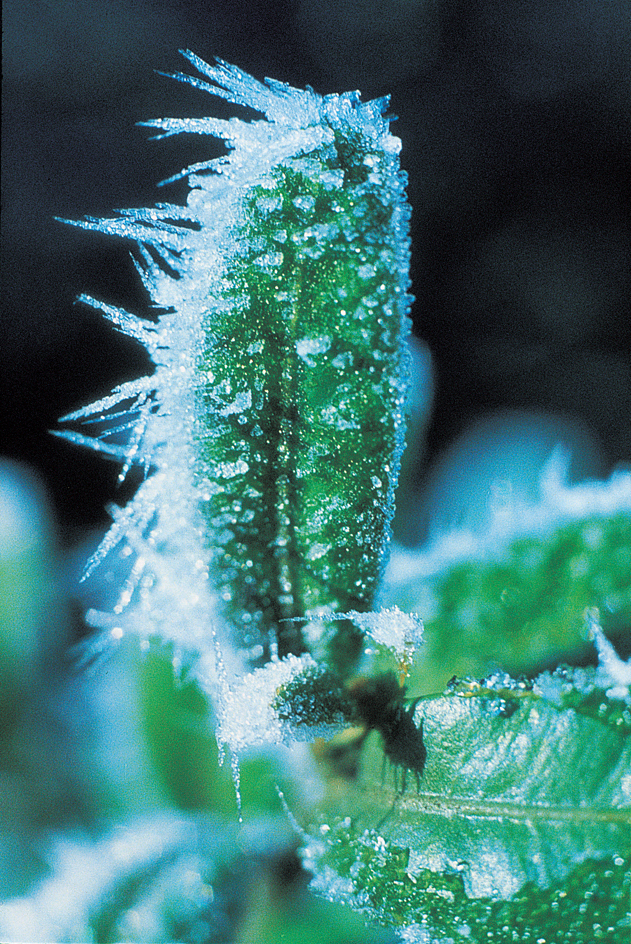Frost is a pattern of ice crystals formed from water vapor on grass, windowpanes, and other exposed surfaces near the ground. Frost occurs mainly on cold, cloudless nights when the air temperature drops below 32 °F (0 °C), which is the freezing point of water.

Frost and dew form in much the same way. During the day, the earth’s surface absorbs heat from the sun. When the sun sets, the earth begins to cool. The drop in temperature is greater on clear nights than on cloudy nights because there are no clouds to reflect the heat given off from the earth’s surface. As the cooling continues, the water vapor in the air condenses to form dewdrops on objects. Some of these dewdrops freeze when the temperature falls below 32 °F The frozen droplets increase in size, becoming frost crystals when the surrounding dewdrops evaporate and deposit water vapor on the crystals. At temperatures below freezing, water vapor sometimes changes directly into ice crystals without first forming dewdrops.
Frost crystals, also called hoarfrost, occur in two basic forms—platelike and columnar. The platelike crystals are flat and resemble snow crystals. The columnar crystals are six-sided columns of ice.
The term frost also refers to below-freezing temperatures harmful to plants. At such temperatures, the fluids in plant cells freeze and expand, causing the cell walls to rupture. Farmers protect crops from this type of frost by warming cold surface air with heaters. They also use large fans to mix the surface air with the warmer air above it. Artificial fog may also be produced to reduce the loss of heat from the surface.
